| I made my
way down the aisle and
managed to find a seat in
the centre of the fifth
or sixth row. In this
way, I would be able to
fill my visual field with
the contents of the
screen. However, there
were still all kinds of
things to endure before
the film began. The only
things that I found
tolerable were the Newsreel
and the trailers. I
have absolutely no memory
of either of these or of
a second feature, if
indeed there was one. I
also have absolutely no
memory of the décor or
of its state within the auditorium.
I cannot recall the
lighting fixtures,
whether there were grilles
or other forms of
decoration either side of
the proscenium or
whether there was an
aisle down the centre of
the auditorium or
if there were side
aisles, and absolutely no
memory at all regarding
the presence or absence
of a circle. What I can
remember is that the proscenium
curtains were
obviously the same and in
their original position
and had not been
sacrificed as they had
been at the Essoldo
Bethnal Green to
accommodate the newly
installed widescreen. Evidently
the width of the auditorium
was greater at the Empress.
What I do remember was
the condition of the
seats. Although I did not
find any broken seats
during my first visit to
the cinema – this
was to happen during
subsequent visits –
I did note that the seats
had lost any semblance
of plushness and
their covering seemed of
a hard leatherette
material, which appeared
cracked and chewed.
However, as I have said,
I had not come to admire
architecture and décor,
but rather to sample the
charms of the beauties
that were soon to
appear on the screen. What
I do remember of the auditorium
was that it was
sparsely populated.
Naturally, as is my way,
whenever I want to see a
film or a play or go to a
concert, I assume that everyone
is like-minded and
that the cinema, theatre
or concert hall will be
filled to capacity. I
also have visions of
being jammed between
heavy set people who will
encroach on my leg area
and deny me access of the
communal armrest. I enjoy
space especially
when attending a spectacle.
Ideally, I would much
prefer empty seats on
either side of me, in
front of me and
especially behind me. I
remember reading in a
magazine that Elvis
Presley would hire a
cinema whenever he wanted
to see a film. Imagine
that, the whole auditorium
to oneself! Appealing
as this might be, it is
somewhat excessive. In my
case, perhaps the central
part of three rows would
suit me well!
 I
remember buying myself an
ice cream. The saleslady
was quite charming and I
remember that she gave me
a smile. I suspect that
this was because I had
been brought up to always
say please when
making a request and thank
you once accepting a
purchase. My friends and
their adult were sitting
close by. I suspect that
they found me somewhat
stand offish since I
had refused their
invitation to join their
group. I much preferred
to sit where I was and
where I was now more than
ready to immerse myself
in the joys of what was
to come. I
remember buying myself an
ice cream. The saleslady
was quite charming and I
remember that she gave me
a smile. I suspect that
this was because I had
been brought up to always
say please when
making a request and thank
you once accepting a
purchase. My friends and
their adult were sitting
close by. I suspect that
they found me somewhat
stand offish since I
had refused their
invitation to join their
group. I much preferred
to sit where I was and
where I was now more than
ready to immerse myself
in the joys of what was
to come.
At last
the ice cream lady disappeared
and the noise from
the gaggle of kids and
odd number of adults
smattered about the auditorium
suddenly was hushed. The
lights dimmed slowly and
a beam of light appeared
from the peephole of
the projection room. The
curtains slowly parted
and the screen was
illuminated with the certificate
issued by the British
Board of Film Censors informing
us that I and everyone
else were going to see a
film that had been passed
for our viewing. Now, at
last, the film was about
to begin. Or was it
……..?
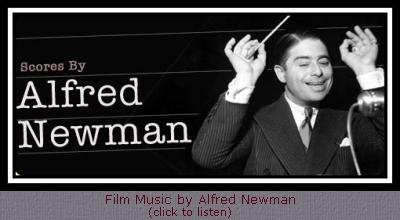 Of
incidental interest to me
at that time was that
prior to the start of the
film, 20th
Century Fox obviously
wanted to demonstrate and
show-off the wonders
of four-track magnetic
stereophonic sound as
well those of CinemaScope.
As a result, the
studio decided to treat
the audience to a short
concert or rather an overture
performed by the huge 20th
Century Fox Symphony
Orchestra. I had
never seen a film begin
in such a manner before
and remember not
relishing the idea now.
The musical piece was
called Street
Scene
and had been written
for the 1931 film of the
same name by the
conductor of the studio
orchestra, Alfred Newman.
I am ashamed to say that
the overture bored
me beyond words and I
found the string
section’s sawing on
their instruments to be
most irritating and
totally unnecessary. My
criticism was not unique
to me. Soon the auditorium
was filled with the angry
jeers of patrons as
impatient as I was for this
noise to be over. Of
incidental interest to me
at that time was that
prior to the start of the
film, 20th
Century Fox obviously
wanted to demonstrate and
show-off the wonders
of four-track magnetic
stereophonic sound as
well those of CinemaScope.
As a result, the
studio decided to treat
the audience to a short
concert or rather an overture
performed by the huge 20th
Century Fox Symphony
Orchestra. I had
never seen a film begin
in such a manner before
and remember not
relishing the idea now.
The musical piece was
called Street
Scene
and had been written
for the 1931 film of the
same name by the
conductor of the studio
orchestra, Alfred Newman.
I am ashamed to say that
the overture bored
me beyond words and I
found the string
section’s sawing on
their instruments to be
most irritating and
totally unnecessary. My
criticism was not unique
to me. Soon the auditorium
was filled with the angry
jeers of patrons as
impatient as I was for this
noise to be over.
At last
the orchestra completed
its overture and
the conductor turned and
took his bow. After he
turned back to face the
musicians, he raised his
arms and as he brought
them down, the orchestra
burst into another
jocular piece. My heart
sank! Surely we were not
going to be treated to
an encore! My
fears were soon allayed.
This time the music was
accompanied by a chorus
who began to extol the
visual virtues of New
York City. Suddenly the
huge screen (2.55:1 width-to-height
aspect) became a mass
of colour and began to
shimmer and I got my
first glimpses of the
crisp, clear images of
the city’s
skyscrapers. I think that
it was then that I
decided not only to visit
this place as soon as
possible but to live
there one day.
The film, How
to Marry a Millionaire, told
the story of three young
women, who club
together to rent a
fabulous apartment in the
fanciest part of New York
City in the hope of
finding rich husbands.
The screenplay was
written by Nunnally
Johnson and based on two
plays, The Greeks Had
a Word for It and Loco
and was directed by
Jean Negulesco. I
remember hearing at one
time that the story had
been filmed earlier in
1936, as Ladies in
Love, and had a
stellar cast including
Janet Gaynor, Loretta
Young and Constance
Bennett as the ladies along
with Don Ameche, Paul
Lukas and Tyrone Power as
the men and
received only mild
success. However, How
to Marry a Millionaire
was given the full
treatment with lavish
sets, a sterling cast
including those bringing
in support and, of
course, CinemaScope. Once
I saw the film’s
advertisement in the
newspaper, I wanted to
see it, but once I saw
its trailer, I was
captivated and could not
wait to see it.
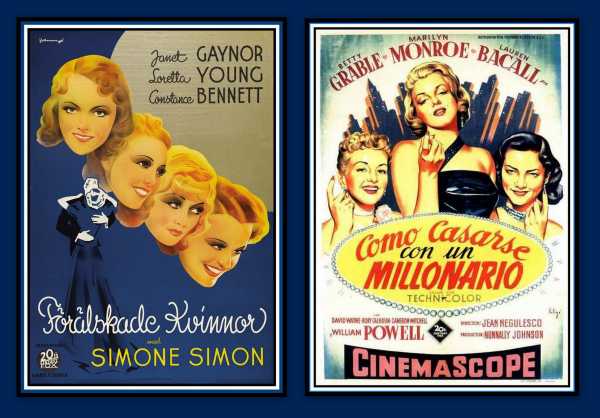
Ladies in
Love and How to
Marry a Millionaire
How to
Marry a Millionaire is
of interest to film
buffs on several
levels. Firstly, although
it went into production
after The Robe, it
became the first to be
completed in the new
process. Secondly, like The
Robe, it received its
British premiere at an Odeon
cinema. However,
unlike The Robe, which
had opened with much hype
at the Odeon Leicester
Square, it opened at
the Odeon Marble Arch,
which was not in the
heart of London’s West
End. Soon after this,
20th
Century Fox leased
the Carlton Haymarket and
the Rialto Coventry
Street to showcase
their latest productions
and continued to do so
for a number of years.
Thirdly, the film was a
vehicle to show off the
obvious talents of three
of the top leading ladies
of the time: Betty
Grable, the one-time
Queen of the Lot;
Marilyn Monroe, the
studio’s current hottest
property; and Lauren
Bacall, whom I did not
know of at the time and
had not seen any of her
films. That joy was to
come later.
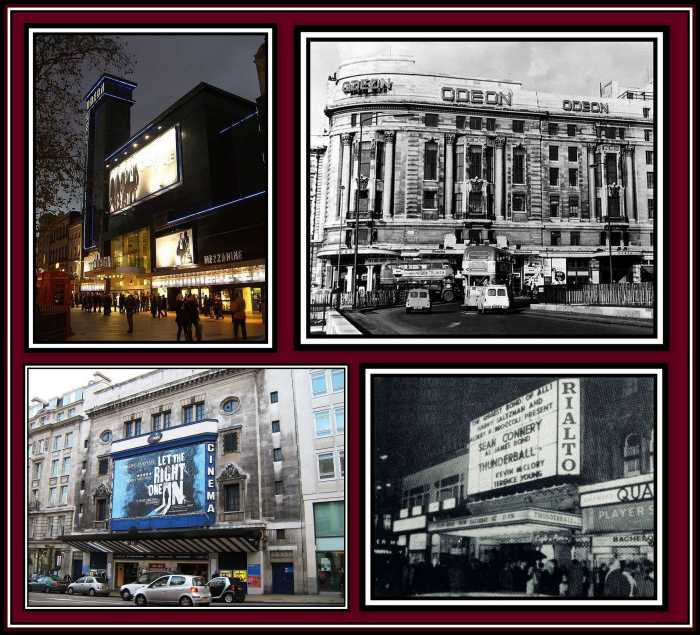
Odeon
Leicester Square (top
left), Odeon Marble Arch
(top right),
Carlton Haymarket (bottom
left) & Rialto
Coventry Street (bottom
right)
The
film’s screenplay
contains several
supposedly amusing references
to the husbands of Lauren
Bacall and Betty Grable
and delivered by them. At
the time of my first
viewing of the film, both
references went over
my head.
Incidentally, the famous
comment by the American
writer Dorothy Parker, men
seldom make passes at
girls who wear glasses was
purposely changed by the
screenwriter for Marilyn
Monroe to deliver. This
she did as, you know,
men are seldom attentive
to girls who wear
glasses. Believe it
or not, I remember
thinking once she had
delivered her line and
removed her spectacles
and promptly walked into
a wall, that she had
misquoted it. What I am
still at a loss to
explain is how it was
that I knew of Ms
Parker’s remark at
that time!
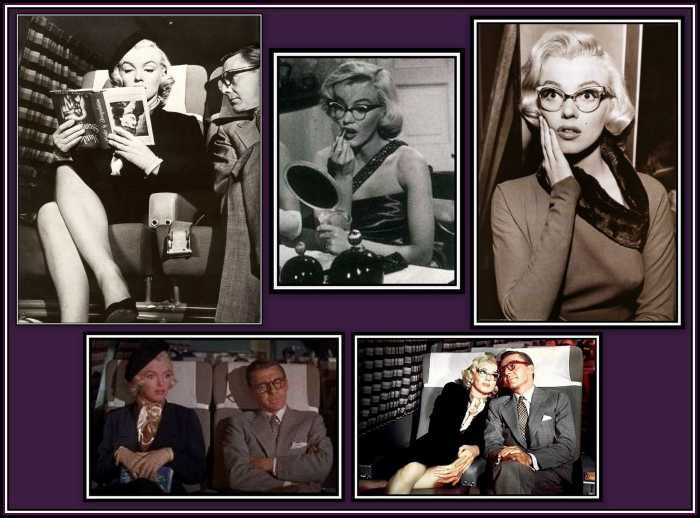
How to
Marry a Millionaire inspired
a
television series
between 1957 and 1959.
There were apparently
fifty-two thirty-minute
episodes made in black
and white starring
Barbara Eden, of I
Dream of Jeannie
fame, playing the Marilyn
Monroe role, Lori
Nelson playing the Betty
Grable role and Merry
Anders as the Lauren
Bacall character. I
am told that the series
is fondly remembered by
some. A little later in
1961, How to Marry a
Millionaire became
the first film to be
shown on American primetime
television when it
was used to premier the
series NBC Saturday
Night at the Movies.
In 1968, the film
inspired an episode of
the television series, I
Dream of Jeanie, called
How to Marry an
Astronaut. According
to a source on the Internet,
the story-line of How
to Marry a Millionaire has
been purchased by Nicole
Kidman, which could mean
that a remake is in the
offing.
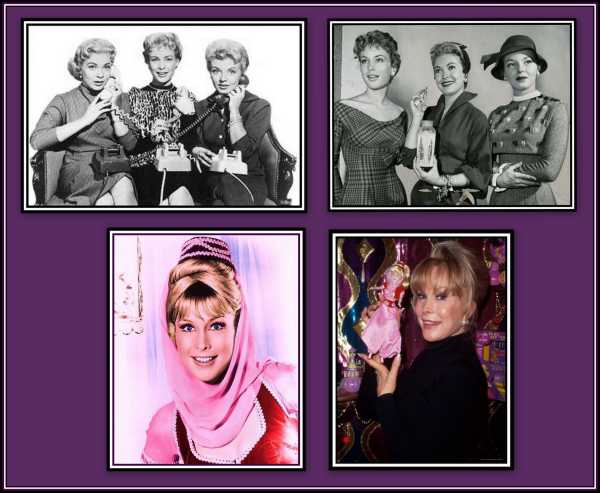
Barbara
Eden, Lori Nelson &
Merry Anders;
Barbara Eden as Jeannie;
Barbara Eden, today
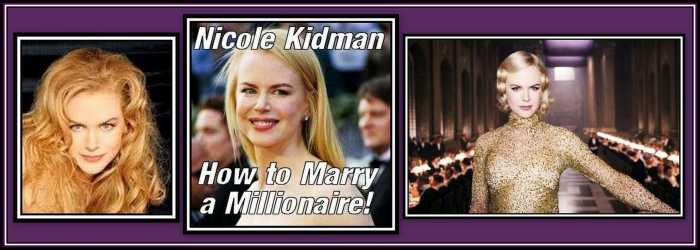
I cannot
say that I was overwhelmed
by the film. I
enjoyed it, I have to
admit. There were certain
images and scenes that I
liked immediately, but on
the whole, I cannot say
that it became an instant
favourite. Marilyn
Monroe looked beautiful,
especially when one was
treated to multiple views
of her when she looked at
herself in the many
mirrors present in a Ladies
Powder Room of a
night club. She wore a
magenta-coloured evening
gown that accentuated her
form. Betty Grable was
somewhat wasted in the
film, I thought, since
she was never seen in a
glamorous manner. She was
her usual happy-go-lucky
self and as a result was
not disappointing. This
was the first time that I
had seen Lauren Bacall
and I found her to be
less than interesting.
She was not particularly
beautiful. Nor was she
glamorous, I felt. Her
role was bigger than the
others and this did not
please me at all. I was
also not aware of William
Powell, who plays one of
her suitors and who almost
marries her. Of the
suitors, only David Wayne
was interesting since he
proved to be the perfect
comedic foil for Ms
Monroe. I actually
laughed out loud when he
returned to the apartment
with an arm in plaster!
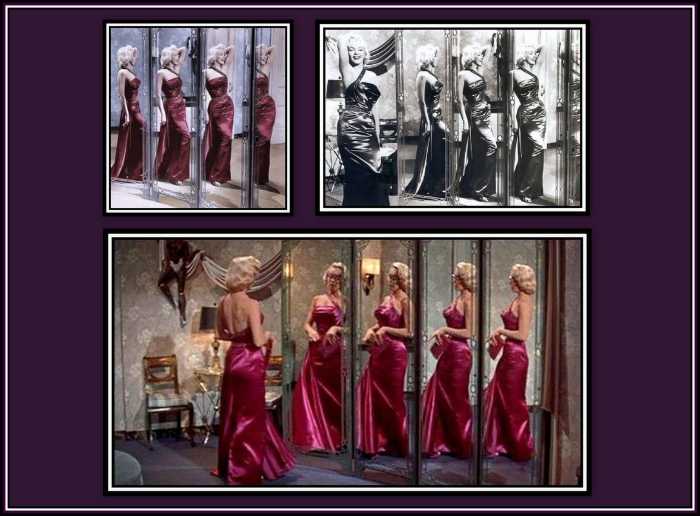
The film
ends with three marriages
with each finding their ideal
partner. The final
scene takes place in a diner
and in a manner that
I would later learn to be
typical of
Americans. Americans
spend their lives trying
to make it. They
want to live in good areas,
they want to drive the
best automobiles and
they want their kids to
meet the right people,
yet they want to be
seen as being just
plain folks. Hence
many university
professors own a small pick-up
truck, Wall Street
Brokers will dress
down at weekends and
politicians will be seen
in diners. This is
done to give the
impression that despite
success, they have not
changed and are still the
same simple folk they
would like you to believe
they once were.
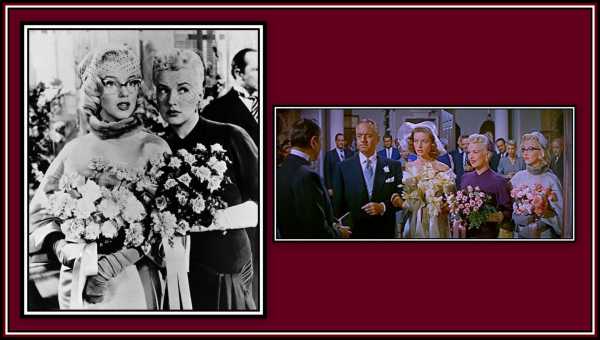
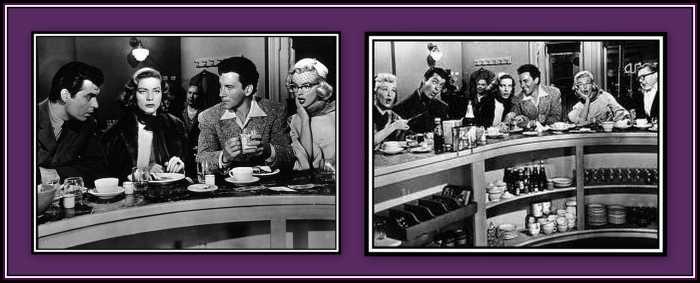
Once the
film ended, or rather
once its ending became
apparent, just about
everyone leapt up and ran
to the exit. That is
everyone, but me. I
developed the habit of
staying upon the final
credit, much to the
annoyance of a number of
companions over the
years, has left the
screen. My friends and
their adult were among
the first to reach the
exit and were gone before
any passing greeting
could be exchanged.
Once the
curtains met to cover the
screen, I got up to leave
the theatre. I remember
that it was not dark yet,
but dusk was falling
rapidly. Outside, I
walked down to the Regal,
which used to be on
the corner between Well
Street and Cambridge
Heath Road and waited
for the 653
Trolleybus.
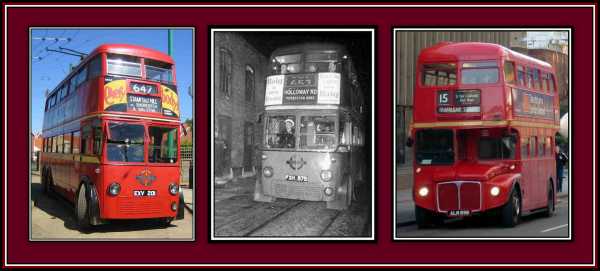
What
amazes me still is that,
as a child, I don’t
remember ever waiting
long for a bus. There
seemed to be many more
buses. They used to
travel in twos and
sometimes even in
threes. I suspect
that there were more
buses then since few
people travelled by car
and public transport was
the normal way to get
around. When the bus
came, I went inside, as
the lower deck used
to be called, paid my
fare and went over in my
mind what I was going to
tell my parents should
they ask how I had spent
my afternoon.
I have to
confess that despite my
efforts to concentrate on
my story for my parents,
my thoughts were being
constantly interrupted
with images of Marilyn
Monroe. The film cemented
my admiration for
her that begun when I saw
Gentlemen Prefer
Blondes and has
continued ever since. I
remember that taught me
that I was as equally
taken with her wearing
glasses as I was with her
not wearing them.
However, I must say that
I was especially taken
with her in that magenta
gown.
I got off
the bus two stops before my
actual stop, as I did
not want to risk my
parents seeing me cross Cambridge
Heath Road at the Mile
End Gate. This was,
and still is, an
especially busy and
dangerous intersection
and if my parents were to
believe that I had gone
to a friend’s house
and then to the Forester’s
cinema, I would have
had no reason to be on
the other side of the
street. I had no trouble
crossing the road and did
so in the company of an
old lady who actually
offered to help me cross.
By the
time I arrived home, my
parents were busy getting
ready to open the
shop for evening sales
and so did not question
me in any depth,
mercifully. Once I got
upstairs to my room, I
have to confess to
feeling a little guilty
about having to keep
secret how I had spent my
afternoon. Still, as I
said, desperate needs
call for desperate
measures. But beware,
no matter how clever you
may think you are, one
day the truth will be
known, and the
consequences will have to
be faced, but until then,
Marilyn Monroe was
more than worth a little
guilt.
.
PHOTOGRAPHIC
STILLS FROM THE FILM
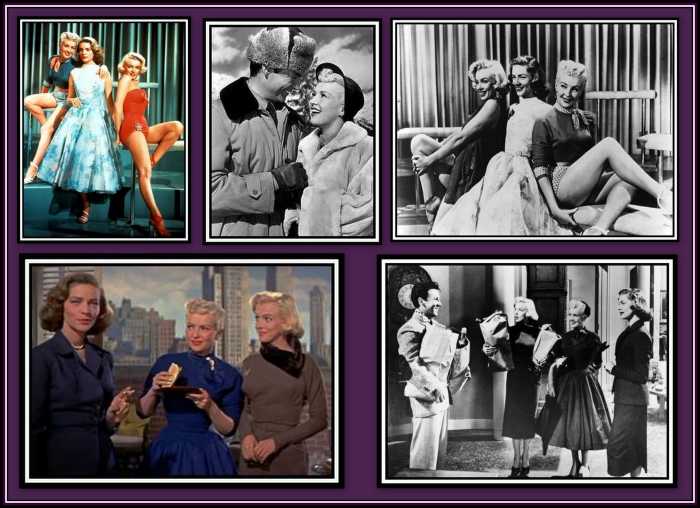
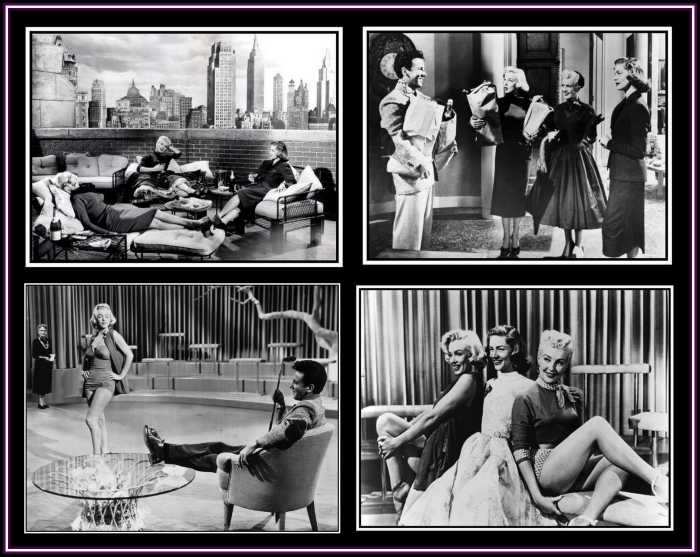

Marilyn
Monroe with
actor Alex D'Arcy
.
MALE
STARS OF THE FILM
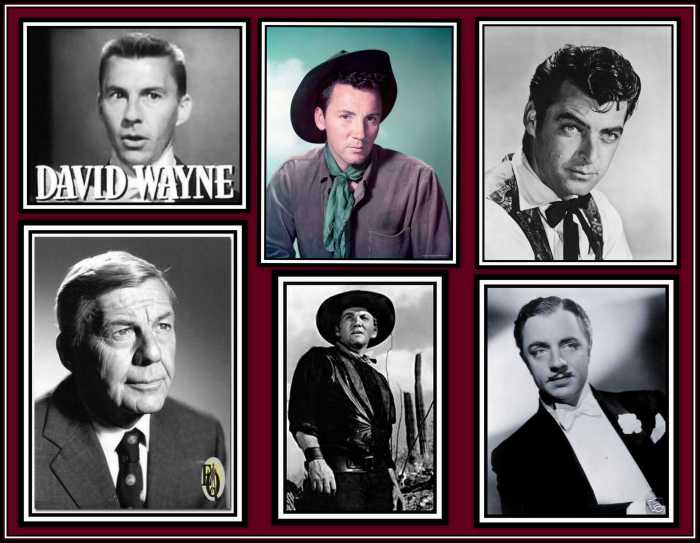
David
Wayne, Cameron Mitchell,
Rory Calhoun &
William Powell
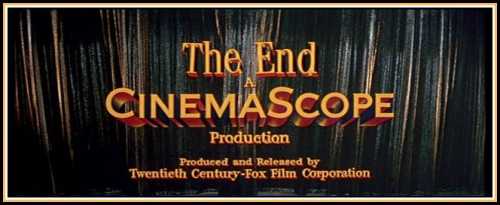
I
would like to thank Mr.
Brian Hall and Mr. Kevin
Wheelan for their
kindness in allowing many
of their pictures to be
reproduced here.
|